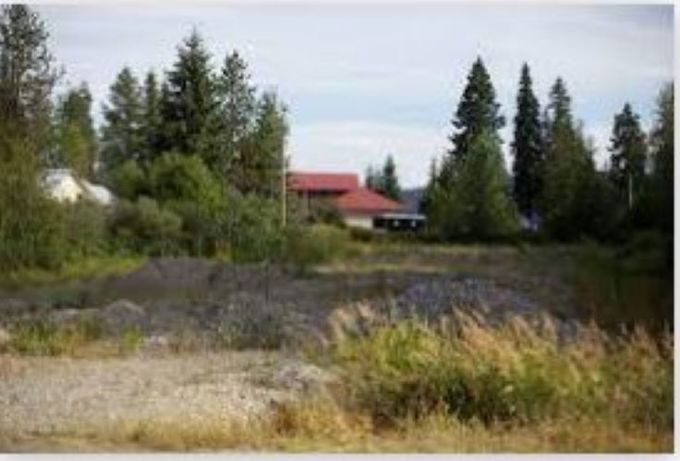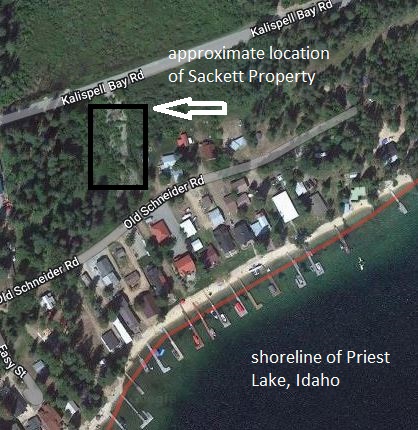
The U.S. Supreme Court Looks at Isolated Wetlands and WOTUS . . . Again!
Sackett v. EPA Comes to the U.S. Supreme Court
In January 2022 the U.S. Supreme Court agreed to hear the question of whether the lower court used the proper test for determining whether the federal Clean Water Act (CWA) wetlands program can regulate a vacant lot in a mostly built-out residential subdivision near Priest Lake, Idaho. The case is Sackett v. EPA. The documents filed in the court docket are available here. The Court’s one-page case summary is found at this link. The case was argued on October 3, 2022. A decision is expected in early-to-mid 2023.
The key point to remember about the Sackett case is that the vacant lot owned by Mr. and Ms. Sackett has no surface water connection to any body of water. This means that the Sackett case implicates the law of “isolated wetlands”, a legal doctrine explained in my blog article Wetlands Law and Regulation in Virginia. Specifically, the question before the Court is, whether the EPA has jurisdiction, through the CWA wetlands program, to regulate a land area that exhibits wetlands characteristics but has no surface water connection to any body of water. Congress wrote the CWA in a way that gave the EPA (and the Army Corps of Engineers) jurisdiction over “waters of the US”, or WOTUS. The specific question, then, is whether this vacant lot in Idaho is located within WOTUS.
Why Wetlands Regulation is Controversial
As I have written before in this blog, the word “wetlands” appears nowhere in the federal Clean Water Act (CWA), yet the wetlands program is the CWA’s most controversial program. Some say that wetlands are an irreplaceable treasure that must be preserved, a point illustrated in the webinar I hosted in February of this year. Others say that wetlands have little value and they get in the way of development and agriculture. A more nuanced view offered by some is their belief that the financial pain of preserving wetlands is felt by the individual landowner whereas the long-term benefit of protecting wetlands flows to the general public. These various viewpoints, captured more than 30 years ago in a Virginia Tech special report, apply today as they did when that report was written. Not surprisingly, controversy can grow whenever people think, rightly or wrongly, that government is requiring one person to fund a benefit enjoyed by others.
The Elusive Quest to Define WOTUS
Due to the strong, sometimes heated, feelings running on all sides of the WOTUS question, and the fact that WOTUS controls the reach of the EPA’s and the Corps’ jurisdiction to regulate wetlands, the past three presidential administrations, the EPA and the Corps have issued multiple rules defining WOTUS. In 2001, the Supreme Court issued its own landmark decision, specific to isolated wetlands, in Solid Waste Agency of Northern Cook County v. U.S. Army Corps of Engineers (majority opinion and dissenting opinion). Often called simply “SWANCC”, the Supreme Court in SWANCC decided on a 5-4 vote that the isolated wetlands in that case were not WOTUS and, hence, the EPA could not exert wetlands regulatory authority on the particular parcel of land that was before the court. The Environmental & Energy Law Program at Harvard Law School published an excellent article that describes the many versions of WOTUS over the years, and the path that brings the Sackett case into the Supreme Court for yet one more attempt to settle the meaning of WOTUS, this time in the context of isolated wetlands.

Photo credit: Courtesy of Google maps, as annotated by J. Lang
Significance of the Supreme Court’s Forthcoming Decision in Sackett
Before closing this article I will quote the words of a highly accomplished wetlands environmental scientist who told me that “wetlands are an area that has water present long enough to impact the soil and plants that grow there”. His description is a nice touch point that I come back to very often, in concert with the more traditional definition at pages 9-10 in the Army Corps’ 1987 Wetlands Delineation Manual. The major news in the Sackett case, though, is not that the Sackett’s property has had water present long enough to impact the soil and the plants that grow there. This is a given. Rather, the significance of the forthcoming decision in the Sackett case is that the U.S. Supreme Court will tell us (as it did in SWANCC) whether an area of isolated wetlands is within the WOTUS and, hence, whether the EPA and the Army Corps can apply their wetlands regulatory authority at that particular location. In the course of making its decision in Sackett, perhaps the Court will even settle the definition of WOTUS.
Or not.
Stay tuned.
Conclusion
The attorneys on our Waterfront Property Law Team have strong connections and significant legal experience. As you can tell from the time a few years ago when one of our attorneys removed his shoes and got in the water to fend off a criminal enforcement action being filed against our client, we go the extra mile for our clients, if that is what is needed to get the job done.
Contact Jim Lang if you would like to see him publish more information on how the wetlands laws affect waterfront property owners in the state of Virginia. Of course, you can always contact Jim for his advice and assistance in connection with needs specific to your particular situation.
